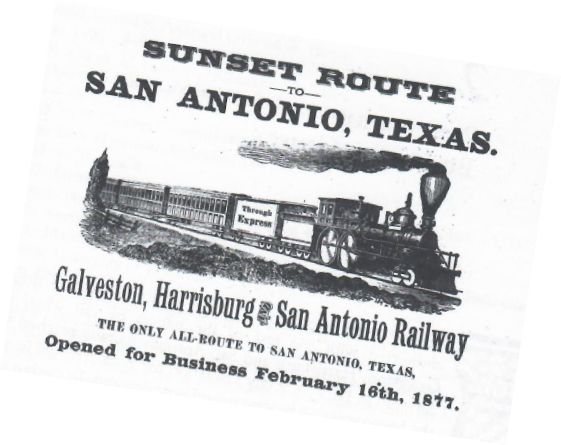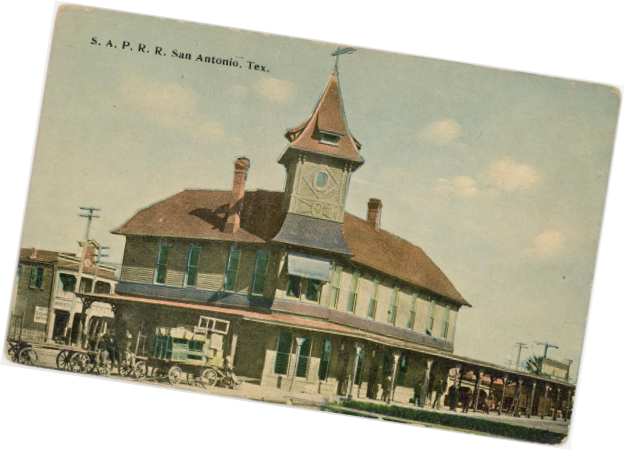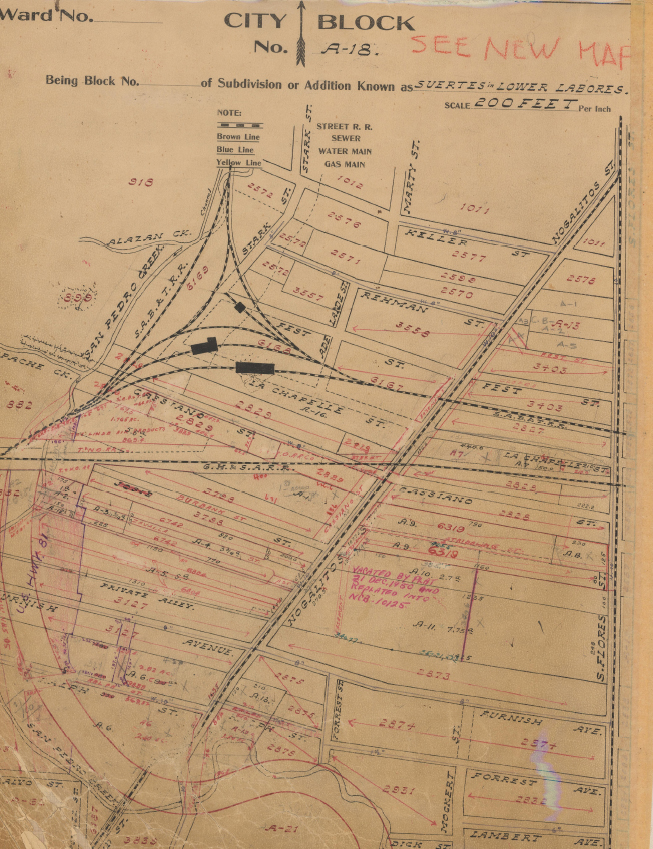Arrival of the Railroad and Transformation of the Lower Labores
English
Español
-
This area along and near San Pedro Creek was still largely undeveloped until rail lines were built here in the late 1800s. Tracks belonging to the International and Great Northern (I&GN), Southern Pacific, San Antonio and Aransas Pass (SAP), and Missouri-Kansas-Texas (M-K-T) railroads were laid both east and west of the creek beginning in 1881. The creek’s steep banks and the threat of flooding necessitated the construction of high wooden trestles to span the channel. As rail lines were laid, commercial and industrial facilities—including warehouses and the city’s stockyards—were built along the rights-of-way to transport livestock, raw goods, and manufactured products in and out of the city. By the early 1900s, San Pedro Creek flowed through a greatly changed landscape.
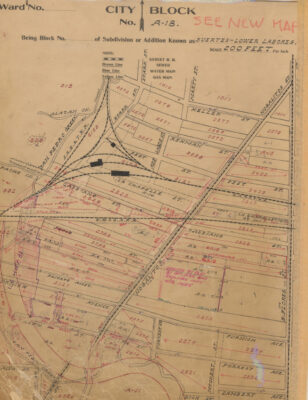
San Pedro Creek railroad crossings near the Alazan Creek confluence.
Original: City of San Antonio Archives.This city block map illustrates the complex network of rail lines that converged just east of San Pedro Creek. The tracks crossed the creek just below its confluence with Alazan and Apache creeks.
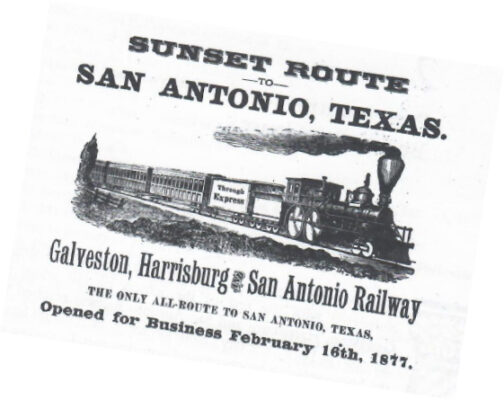
Courtesy: San Antonio Express-News and Hearst Corporation. Local leaders began their campaign to bring the railroad to San Antonio in 1850. Their efforts succeeded 27 years later when the first train arrived in February 1877, finally linking San Antonio to cities in Texas and beyond.
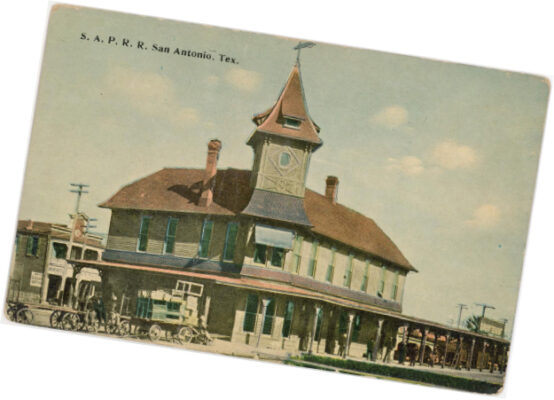
Courtesy: San Antonio River Authority. The San Antonio and Aransas Pass Railway built its passenger depot just a few blocks from this site in 1886. The building, located at the intersection of Flores and Aransas (now South Alamo) streets, was demolished in 1939.
-
Esta área a lo largo y cerca de San Pedro Creek todavía estaba en gran parte sin desarrollar hasta que se construyeron líneas de ferrocarril aquí a fines del siglo XIX. Las vías pertenecientes a las compañías International and Great Northern (I&GN), Southern Pacific, San Antonio and Aransas Pass (SAP), y Missouri-Kansas-Texas (M-K-T) se colocaron tanto al este como al oeste del arroyo a partir de 1881. Las orillas empinadas del arroyo y la amenaza de inundaciones requirieron la construcción de altos caballetes de madera para atravesar el cauce. A medida que se instalaban las líneas ferroviarias, se construyeron instalaciones comerciales e industriales—including almacenes y los corrales de ganado de la ciudad—a lo largo de los derechos de paso, para transportar ganado, materias primas y productos manufacturados dentro y fuera de la ciudad. A principios del siglo XX, San Pedro Creek fluía por un paisaje muy transformado.

San Pedro Creek railroad crossings near the Alazan Creek confluence.
Original: City of San Antonio Archives.Este mapa de cuadras de la ciudad ilustra la compleja red de líneas ferroviarias que convergían justo al este de San Pedro Creek. Las vías cruzaban el arroyo justo debajo de su confluencia con los arroyos Alazán y Apache.

Courtesy: San Antonio Express-News and Hearst Corporation. Los líderes locales comenzaron su campaña para traer el ferrocarril a San Antonio en 1850. Sus esfuerzos tuvieron éxito 27 años después, cuando el primer tren llegó en febrero de 1877, conectando finalmente a San Antonio con ciudades dentro y fuera de Texas.

Courtesy: San Antonio River Authority. El Ferrocarril de San Antonio y Aransas Pass construyó su estación de pasajeros a unas pocas cuadras de este sitio en 1886. El edificio, ubicado en la intersección de las calles Flores y Aransas (actualmente South Alamo), fue demolido en 1939.

